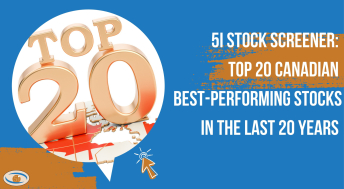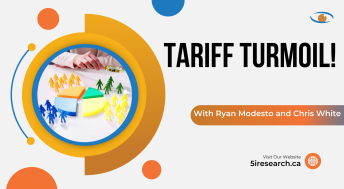ETFs—Exchange Traded Funds—were not supposed to be like this.
They were supposed to help individual investors—reduce fees, simplify investments, provide better returns.
Instead, though, the ETF industry has morphed into, well, a confusing mix of thousands of funds, with a variety of fees, with dozens of specialty—but completely illiquid—products. Worse, the ETF industry also in its development decided that investors needed to ‘gamble’, or own products that needed to go up or down two—or three—times whatever it was that they were replicating.
But that wasn’t enough. In what might only be a drive towards higher fees, the ETF industry has also added ‘actively-managed’ funds. What’s the deal with that? Isn’t that just a mutual fund in ETF clothing?
We just ran our monthly ETF screen from Morningstar/Paltrack. Just in Canada, our excel file on Canadian ETFs had 948 rows of different ETFs and benchmarks.
Looking at our report, one can almost only come to these conclusions on ETFs: Too many; Too thinly traded; Too specific; and, on many; Too High Fees.
Here are some of the stranger ETFs we found in Canada and the US.
Black Swan ETFs: Were you depressed because you didn’t actually make money in the financial crisis? Maybe you need some ETFs that plan ahead for these once-in-a-lifetime events. Horizons Exchange Traded Funds has two ETFs based on Black Swan basics. According to Nicholas Taleb, an advisor to the funds, a Black Swan event is an outlier, carries an extreme impact, and is only explainable after the fact. The HUT ETF is designed to protect you against such events. It is tiny, though, at $12 million in assets, so maybe not too many investors are worried enough about the Swans. It is up a bit since its IPO and has paid a couple of dividends as well.
A bigger fund, but still in the unique category, is the Horizons Seasonal Rotation ETF (HAC). It buys equities, bonds, commodities and currencies according to their seasonal investment performance patterns. Not sure if it’s farmers buying this one, but this $90 million ETF is up 3.5% this year.
Ibbotson Alternative Completion (PTO): PTO is an ETF of ETFs—literally. The mix of ETFs included in the fund changes as do the ETF allocations so you have no way of knowing what this ETF is actually going to own at any given point. So if you like ETFs so much that you want to own an ETF that owns ETFs, then this is for you. This $9 million fund is up 10% this year.
Finally, if you can’t afford a trip to Vegas, you can always blow your money on a ‘gambling’ ETF. No, not those ETFs that buy gambling industry companies, although there are a few of those. No, we are talking just pure speculation here: The EDZ, is a triple-move emerging markets bear fund, in case you need more action than the already-extreme emerging market sector. It will go up 3X what the emerging index goes down. How’s that gamble working? Well, this $132 million ETF (who buys these things!) is down 43% this year.
Or, if that’s not exotic enough: The JGBD will give you 3X the inverse of the Japanese Government bond futures. This $20 million lottery ticket is only down 6.5% this year.
Our point here: ETFs can be useful, in their basic, indexing, low-fee form. Stay away from the crazy stuff, and if you want an actively managed fund, keep in mind that you are only drifting away from what ETFs were meant to be.





Comments
Login to post a comment.